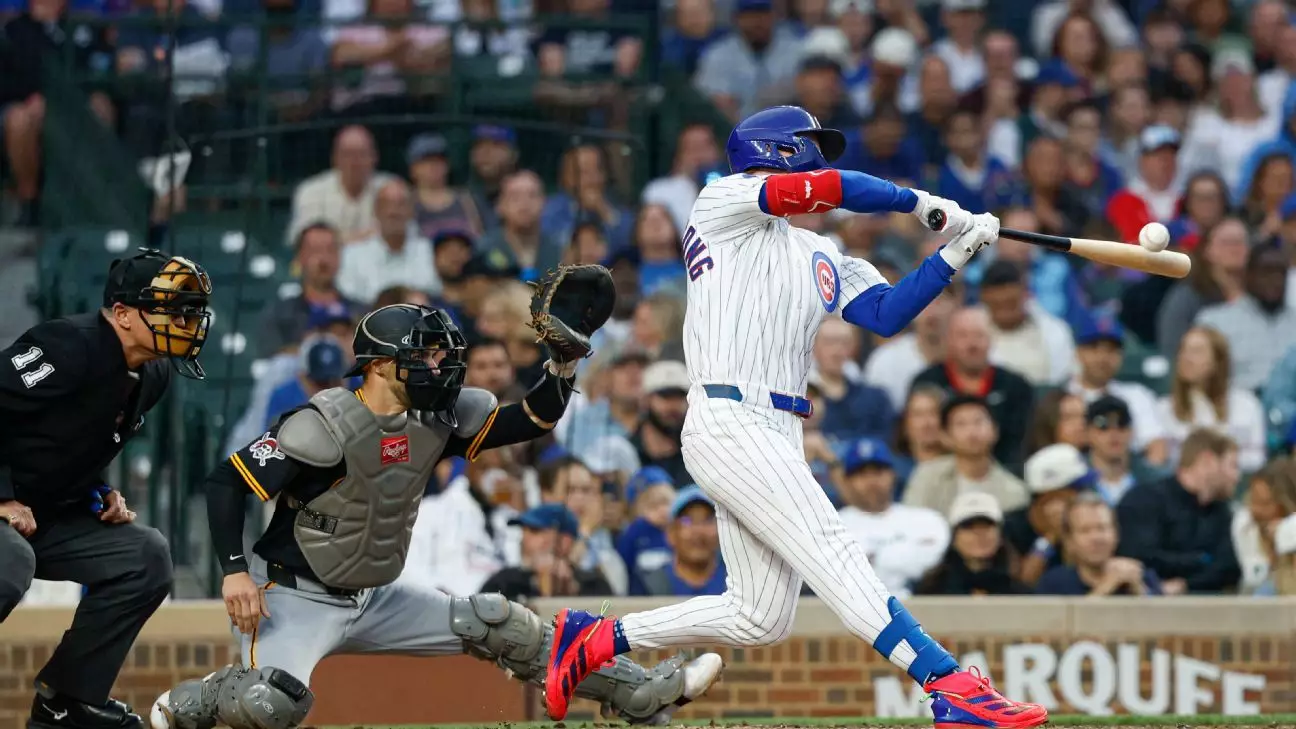In a stunning display of skill and determination, Chicago Cubs center fielder Pete Crow-Armstrong has captivated baseball fans and experts alike with his extraordinary ability at the plate. During a recent game against the Pittsburgh Pirates, Crow-Armstrong achieved what many would deem improbable—a home run hit from a pitch that was over eight inches above the strike zone. This remarkable feat is not just a statistical anomaly; it signals a new wave of offensive prowess that challenges conventional wisdom about hitting mechanics. For someone to excel in hitting pitches that most players would consider unmanageable, it demonstrates not only exceptional technique but an impressive mental acuity that few possess.
In his post-game remarks, Crow-Armstrong noted the importance of timing, highlighting this crucial aspect of his approach to hitting. His ability to connect with high fastballs—often deemed “bad pitches”—has become a hallmark of his burgeoning career. This breakout achievement illustrates how players can redefine conventional hitting strategies by embracing pitches outside the strike zone. The two-run blast he hit is not merely an anodyne statistic; it also emphasizes a larger trend where analysts and coaches must reevaluate long-held beliefs about pitch selection and the strike zone’s boundaries.
Challenging Norms: A Bad Ball Master
Crow-Armstrong’s knack for hitting pitches in unconventional zones has led many to speculate about his future as a player. His reputation as a “bad ball” hitter could make him a transformative figure in baseball. Unlike traditional hitters who thrive on pitches easily classified within the strike zone, Crow-Armstrong has carved a niche for himself, proving that success can come from challenging the very limits of standard batting practice. Cubs manager Craig Counsell echoed this sentiment, suggesting that Crow-Armstrong has managed to turn previously unthinkable hitting practices into an art form.
The fact that he has homered on pitches both above and below the strike zone is not merely coincidental; it underscores a shift in how players approach the game. The reliance on conventional hitting advice is being challenged as players like Crow-Armstrong push the boundaries of what’s possible. His approach raises questions about how coaches might adapt their methods to cultivate similar talents in the future. The very fabric of hitting strategy is being rewoven as he continues to establish himself as a unique talent worth investing in.
A Rising Star: All-Star Contender
Crow-Armstrong is not just a power hitter; he also combines offensive skills with exceptional defense, making a compelling case for an All-Star nomination. With his impressive stats, including 18 home runs and 21 stolen bases, he models the kind of all-around game that teams covet in today’s MLB dynamic. Playing at a level where his defensive skills are gold glove caliber while still excelling offensively puts him at the forefront of ambition within the league.
Moreover, his fWAR which ranks him at the top of the National League, speaks volumes about his impact on the game. The synergy created between Crow-Armstrong and teammates like Seiya Suzuki exemplifies how collaboration and rivalry can foster growth within a team. The friendly competition to lead the team in home runs and RBI statistics not only elevates their game but also enhances the overall performance of the Cubs’ lineup. His words about contributing to the “bigger picture” reveal a maturity that is often lacking in younger players, showcasing his understanding of team dynamics.
Rethinking Pitching Strategies
For pitchers, the emergence of a talent like Crow-Armstrong demands a strategic rethink. Cubs reliever Ryan Pressly hinted at this quandary, admitting his own confusion in crafting pitches for Crow-Armstrong. When a player can connect with pitches that typically would be deemed off-limits, it creates a headache for opposing pitchers; they must reassess their pitching strategies in real-time when facing him. No longer can pitchers simply rely on fastballs up high or curveballs down low; Crow-Armstrong’s skill set encourages a more nuanced approach to pitching.
This unpredictability not only keeps pitchers on their toes but also compels them to live in a world where every pitch must be carefully calibrated to avoid being hit hard. Crow-Armstrong’s versatility is revolutionizing pitching methodologies, and pitchers may soon need to develop completely new arsenals to handle players who define the boundaries of what a hit can represent. The landscape of offensive baseball is undeniably shifting, led by the likes of Pete Crow-Armstrong, forever altering the game’s fabric for future generations.


Leave a Reply